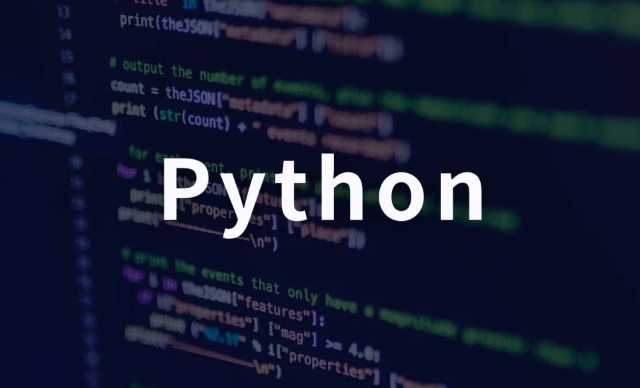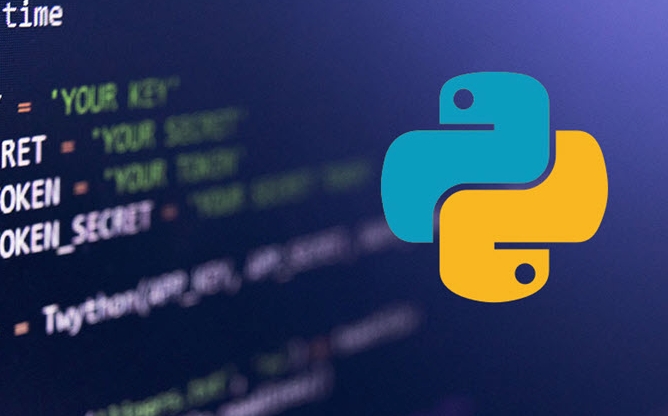 Backend Development
Backend Development
 Python Tutorial
Python Tutorial
 Building Natural Language Understanding Systems with Python
Building Natural Language Understanding Systems with Python
The core of the natural language understanding (NLU) system is to enable machines to "understand" human language. Python provides comprehensive support from text preprocessing to model training to deployment and launch. 1. Text preprocessing includes data cleaning and feature extraction. Common tools are nltk, spaCy and sklearn, which involve removing punctuation, stop words, word segmentation, stemming or word shape restoration. 2. Model selection depends on the task type. Traditional methods such as TF-IDF combined with SVM are suitable for getting started. Deep learning methods such as BERT are more suitable for complex semantic tasks and can be implemented through transformers library. 3. In the deployment stage, interfaces can be built using Flask or FastAPI, combined with Docker containers and ONNX or TorchScript to optimize inference performance. At the same time, attention should be paid to logging and caching mechanisms to improve efficiency. It is recommended to start with a simple project and gradually practice and adjust the strategy.

The core of the natural language understanding (NUL) system is to enable machines to "understand" human language. As one of the mainstream development languages, Python has strong support in building NLU systems. From text preprocessing to model training, to deployment and launch, there are mature libraries and frameworks available in almost every link.

If you are just starting to get in touch with this direction, the following parts are what you need to know the most.
Text preprocessing: data cleaning and feature extraction
The first step in building an NLU system is usually to process the raw text data. This step directly affects the performance of subsequent models. Common operations include:

- Remove punctuation and stop words
- Tokenization
- Stemming or Lemmatization
Commonly used tools in Python include nltk , spaCy , and sklearn . For example, it is very convenient to use nltk for word segmentation and remove stop words:
from nltk.corpus import stopwords from nltk.tokenize import word_tokenize text = "This is a sample sentence showing preprocessing." tokens = word_tokenize(text) filtered = [w for w in tokens if not w in stopwords.words('english')]
This part seems simple, but there are actually many details that need attention. For example, how to deal with English abbreviations, whether upper and lower case is unified, and whether special symbols are retained will all affect the final effect.

Model selection and training: From traditional methods to deep learning
In the NLU field, model selection depends on your specific tasks, such as intention recognition, entity recognition, sentiment analysis, etc. Here are some common options:
- Traditional approach : TF-IDF-based SVM or Random Forest Classifier is suitable for entry-level projects.
- Deep Learning Methods : BERT class models (such as the
transformerslibrary provided by Hugging Face) have become standard tools, especially suitable for complex semantic understanding tasks.
For example, use transformers to load a pretrained BERT model for classification:
from transformers import pipeline
classifier = pipeline("text-classification")
result = classifier("I love using Python for NLP tasks.")When training your own model, remember to divide the data reasonably (training set, validation set, test set) and pay attention to overfitting problems. Appropriate use of cross-verification and early stop mechanisms can improve generalization capabilities.
Deployment and Optimization: Let the system really run
After completing the model training, the next step is to integrate it into the actual application. Python also has many choices in this regard:
- Build REST interfaces using Flask or FastAPI
- Package the model as a service (such as a Docker container)
- Use ONNX or TorchScript to perform model compression and accelerate inference
What is easy to ignore during deployment is performance tuning and logging. For example, caches can be used to reduce duplicate inferences, or to record user input to continuously optimize the model.
Basically that's it. While each step doesn’t seem difficult, when put together, details are prone to errors. It is recommended to start practicing from a small project, gradually deepen, and adjust the strategies while doing it.
The above is the detailed content of Building Natural Language Understanding Systems with Python. For more information, please follow other related articles on the PHP Chinese website!

Hot AI Tools

Undress AI Tool
Undress images for free

Undresser.AI Undress
AI-powered app for creating realistic nude photos

AI Clothes Remover
Online AI tool for removing clothes from photos.

Clothoff.io
AI clothes remover

Video Face Swap
Swap faces in any video effortlessly with our completely free AI face swap tool!

Hot Article

Hot Tools

Notepad++7.3.1
Easy-to-use and free code editor

SublimeText3 Chinese version
Chinese version, very easy to use

Zend Studio 13.0.1
Powerful PHP integrated development environment

Dreamweaver CS6
Visual web development tools

SublimeText3 Mac version
God-level code editing software (SublimeText3)

Hot Topics
 Polymorphism in python classes
Jul 05, 2025 am 02:58 AM
Polymorphism in python classes
Jul 05, 2025 am 02:58 AM
Polymorphism is a core concept in Python object-oriented programming, referring to "one interface, multiple implementations", allowing for unified processing of different types of objects. 1. Polymorphism is implemented through method rewriting. Subclasses can redefine parent class methods. For example, the spoke() method of Animal class has different implementations in Dog and Cat subclasses. 2. The practical uses of polymorphism include simplifying the code structure and enhancing scalability, such as calling the draw() method uniformly in the graphical drawing program, or handling the common behavior of different characters in game development. 3. Python implementation polymorphism needs to satisfy: the parent class defines a method, and the child class overrides the method, but does not require inheritance of the same parent class. As long as the object implements the same method, this is called the "duck type". 4. Things to note include the maintenance
 Python Function Arguments and Parameters
Jul 04, 2025 am 03:26 AM
Python Function Arguments and Parameters
Jul 04, 2025 am 03:26 AM
Parameters are placeholders when defining a function, while arguments are specific values ??passed in when calling. 1. Position parameters need to be passed in order, and incorrect order will lead to errors in the result; 2. Keyword parameters are specified by parameter names, which can change the order and improve readability; 3. Default parameter values ??are assigned when defined to avoid duplicate code, but variable objects should be avoided as default values; 4. args and *kwargs can handle uncertain number of parameters and are suitable for general interfaces or decorators, but should be used with caution to maintain readability.
 Explain Python generators and iterators.
Jul 05, 2025 am 02:55 AM
Explain Python generators and iterators.
Jul 05, 2025 am 02:55 AM
Iterators are objects that implement __iter__() and __next__() methods. The generator is a simplified version of iterators, which automatically implement these methods through the yield keyword. 1. The iterator returns an element every time he calls next() and throws a StopIteration exception when there are no more elements. 2. The generator uses function definition to generate data on demand, saving memory and supporting infinite sequences. 3. Use iterators when processing existing sets, use a generator when dynamically generating big data or lazy evaluation, such as loading line by line when reading large files. Note: Iterable objects such as lists are not iterators. They need to be recreated after the iterator reaches its end, and the generator can only traverse it once.
 Python `@classmethod` decorator explained
Jul 04, 2025 am 03:26 AM
Python `@classmethod` decorator explained
Jul 04, 2025 am 03:26 AM
A class method is a method defined in Python through the @classmethod decorator. Its first parameter is the class itself (cls), which is used to access or modify the class state. It can be called through a class or instance, which affects the entire class rather than a specific instance; for example, in the Person class, the show_count() method counts the number of objects created; when defining a class method, you need to use the @classmethod decorator and name the first parameter cls, such as the change_var(new_value) method to modify class variables; the class method is different from the instance method (self parameter) and static method (no automatic parameters), and is suitable for factory methods, alternative constructors, and management of class variables. Common uses include:
 How to handle API authentication in Python
Jul 13, 2025 am 02:22 AM
How to handle API authentication in Python
Jul 13, 2025 am 02:22 AM
The key to dealing with API authentication is to understand and use the authentication method correctly. 1. APIKey is the simplest authentication method, usually placed in the request header or URL parameters; 2. BasicAuth uses username and password for Base64 encoding transmission, which is suitable for internal systems; 3. OAuth2 needs to obtain the token first through client_id and client_secret, and then bring the BearerToken in the request header; 4. In order to deal with the token expiration, the token management class can be encapsulated and automatically refreshed the token; in short, selecting the appropriate method according to the document and safely storing the key information is the key.
 What are Python magic methods or dunder methods?
Jul 04, 2025 am 03:20 AM
What are Python magic methods or dunder methods?
Jul 04, 2025 am 03:20 AM
Python's magicmethods (or dunder methods) are special methods used to define the behavior of objects, which start and end with a double underscore. 1. They enable objects to respond to built-in operations, such as addition, comparison, string representation, etc.; 2. Common use cases include object initialization and representation (__init__, __repr__, __str__), arithmetic operations (__add__, __sub__, __mul__) and comparison operations (__eq__, ___lt__); 3. When using it, make sure that their behavior meets expectations. For example, __repr__ should return expressions of refactorable objects, and arithmetic methods should return new instances; 4. Overuse or confusing things should be avoided.
 How does Python memory management work?
Jul 04, 2025 am 03:26 AM
How does Python memory management work?
Jul 04, 2025 am 03:26 AM
Pythonmanagesmemoryautomaticallyusingreferencecountingandagarbagecollector.Referencecountingtrackshowmanyvariablesrefertoanobject,andwhenthecountreacheszero,thememoryisfreed.However,itcannothandlecircularreferences,wheretwoobjectsrefertoeachotherbuta
 Python `@property` decorator
Jul 04, 2025 am 03:28 AM
Python `@property` decorator
Jul 04, 2025 am 03:28 AM
@property is a decorator in Python used to masquerade methods as properties, allowing logical judgments or dynamic calculation of values ??when accessing properties. 1. It defines the getter method through the @property decorator, so that the outside calls the method like accessing attributes; 2. It can control the assignment behavior with .setter, such as the validity of the check value, if the .setter is not defined, it is read-only attribute; 3. It is suitable for scenes such as property assignment verification, dynamic generation of attribute values, and hiding internal implementation details; 4. When using it, please note that the attribute name is different from the private variable name to avoid dead loops, and is suitable for lightweight operations; 5. In the example, the Circle class restricts radius non-negative, and the Person class dynamically generates full_name attribute





